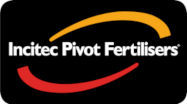Phosphorus can make a rewarding investment
Graziers who invest in lifting soil phosphorus fertility have the potential to reap impressive rewards for years to come. That’s the message from farm business and livestock adviser, James Whale from Meridian Agriculture, Hamilton.
Superphosphate is one of the most effective investments available to most grazing businesses, although it is often underestimated.
While it’s no secret that pastures need phosphorus to grow, a lot of graziers aren’t aware of their soil’s fertility or how much it could be holding them back.
But current market conditions and livestock prices could make it more rewarding than ever to invest in soil fertility. The upturn has had a major impact on the potential returns grazing businesses could achieve from capital fertiliser applications through increases in productivity.
To illustrate the potential for high returns, I developed a scenario based on a typical commercial livestock enterprise in the western district of Victoria.
In this scenario, a typical grazier has the potential to increase per hectare net returns by over $200 per annum by investing in phosphorus and making the most of the extra pasture growth it generated.
The farm in the scenario has an average pasture growing season of eight months and low soil fertility (Olsen P of 8).
By making additional capital applications of superphosphate over three years, so that soil fertility increases to an Olsen P of 15, the stocking rate could potentially increase from 10 to 17.5 DSE/ha.
This assumes that phosphorus is the only nutrient limiting pasture growth.
Even accounting for expenditure on additional livestock ($100/DSE), the economic analysis predicted an internal rate of return of 37% from the investment in fertiliser over 10 years.
The scenario assumes a fertiliser cost of $350/t for superphosphate spread in the paddock and enterprise gross margins of $50/DSE.
A capital phosphorus improvement may still be a profitable investment even at higher fertiliser prices and in times of lower enterprise gross margins.
At $500/t for superphosphate and gross margins of $25/DSE, the internal rate of return was still 15%.
The investment in capital P fertiliser (in this scenario a total of 62 kg/ha of phosphorus or 705 kg/ha of superphosphate over three years) and the costs associated with increasing livestock numbers all occur in the first three years.
The remaining seven years captured the additional income generated by the higher stocking rates.
The pastures don’t need to be the latest release or highest performing species.
While a lot of farmers look to pasture renovation, my message would be to get soil fertility right first. It’s amazing how fertiliser can turn a tired paddock around.
Potential IRR from capital fertiliser investment in a livestock grazing enterprise over a 10-year period*
|
|
Enterprise Gross Margin $25/DSE |
Enterprise Gross Margin $50/DSE |
|
Single Super $350/t spread |
17% |
37% |
|
Single Super $500/t spread |
15% |
34% |
*Specific assumptions for IRR calculations detailed in this table include:
- Average length of growing season 8 months
- Starting Olsen P 8 lifted to 15 over 3 years
- Initial stocking rate 10 DSE/ha lifted to 17.5 over same period
- Capital P required 62 kg P/ha
- Annual P required for maintenance 0.8 kg/DSE
- P identified as only limiting macronutrient to achieve SRF (adequate K levels), Soil PBI 100, Capital cost of additional livestock $100/DSE.
- Note: Be aware that the IRR values presented in the table cannot be used generically across grazing situations as a change to any one of listed assumptions together with other factors, such as weather and environmental conditions, soil conditions, gross margins and other variables and expenses, will impact the IRR calculations shown.
- Incitec Pivot Fertilisers makes no representations or warranties as to the reliability, completeness or suitability for any particular purpose of the information provided. Before using this product, users should consult their local agronomic adviser.
- This does not constitute financial advice and you should seek your own independent advice in assessing the financial implications for your business.


